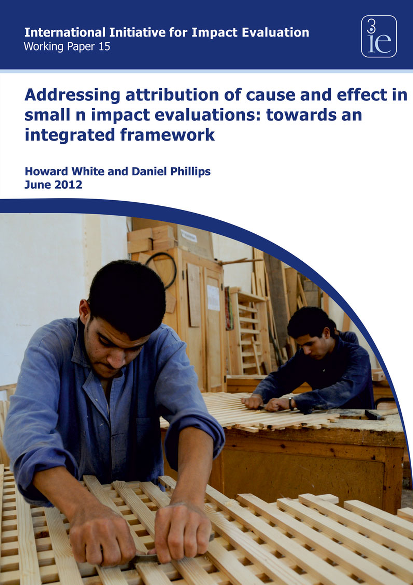
With the results agenda in the ascendancy in the development community, there is an increasing need to demonstrate that development spending makes a difference, that it has an impact. This requirement to demonstrate results has fuelled an increase in the demand for, and production of, impact evaluations. There exists considerable consensus among impact evaluators conducting large n impact evaluations involving tests of statistical difference in outcomes between the treatment group and a properly constructed comparison group. However, no such consensus exists when it comes to assessing attribution in small n cases, i.e. when there are too few units of assignment to permit tests of statistical difference in outcomes between the treatment group and a properly constructed comparison group.
We examine various evaluation approaches that could potentially be suitable for small n analysis and find that a number of them share a methodological core which could provide a basis for consensus. This common core involves the specification of a theory of change together with a number of further alternative causal hypotheses. Causation is established beyond reasonable doubt by collecting evidence to validate, invalidate, or revise the hypothesised explanations, with the goal of rigorously evidencing the links in the actual causal chain.
We argue that, properly applied, approaches which undertake these steps can be used to address attribution of cause and effect. However, we also find that more needs to be done to ensure that small n evaluations minimise the biases which are likely to arise from the collection, analysis and reporting of qualitative data. Drawing on insights from the field of cognitive psychology, we argue that there is scope for considerable bias, both in the way in which respondents report causal relationships, and in the way in which evaluators gather and present data; this points to the need to incorporate explicit and systematic approaches to qualitative data collection and analysis as part of any small n evaluation.
